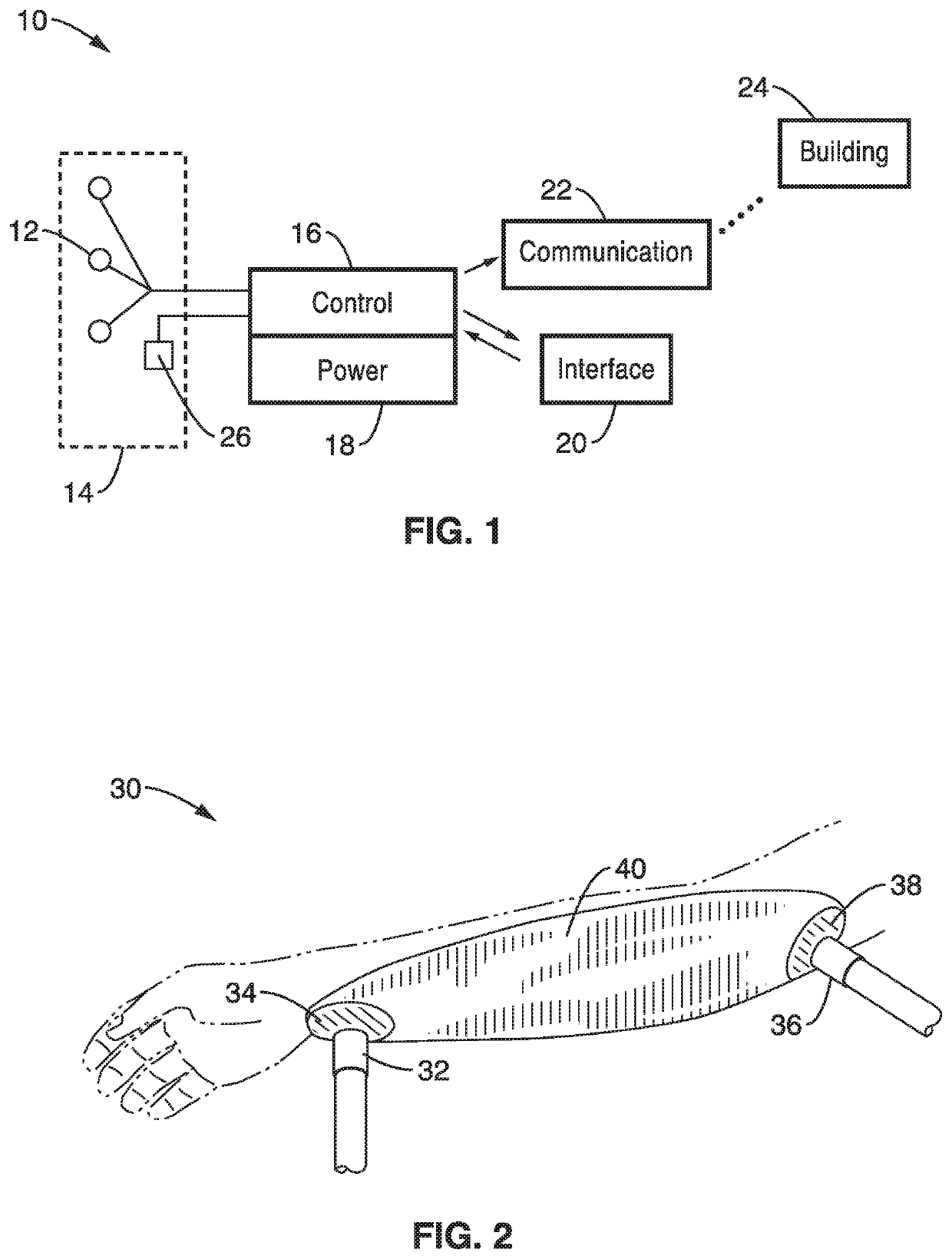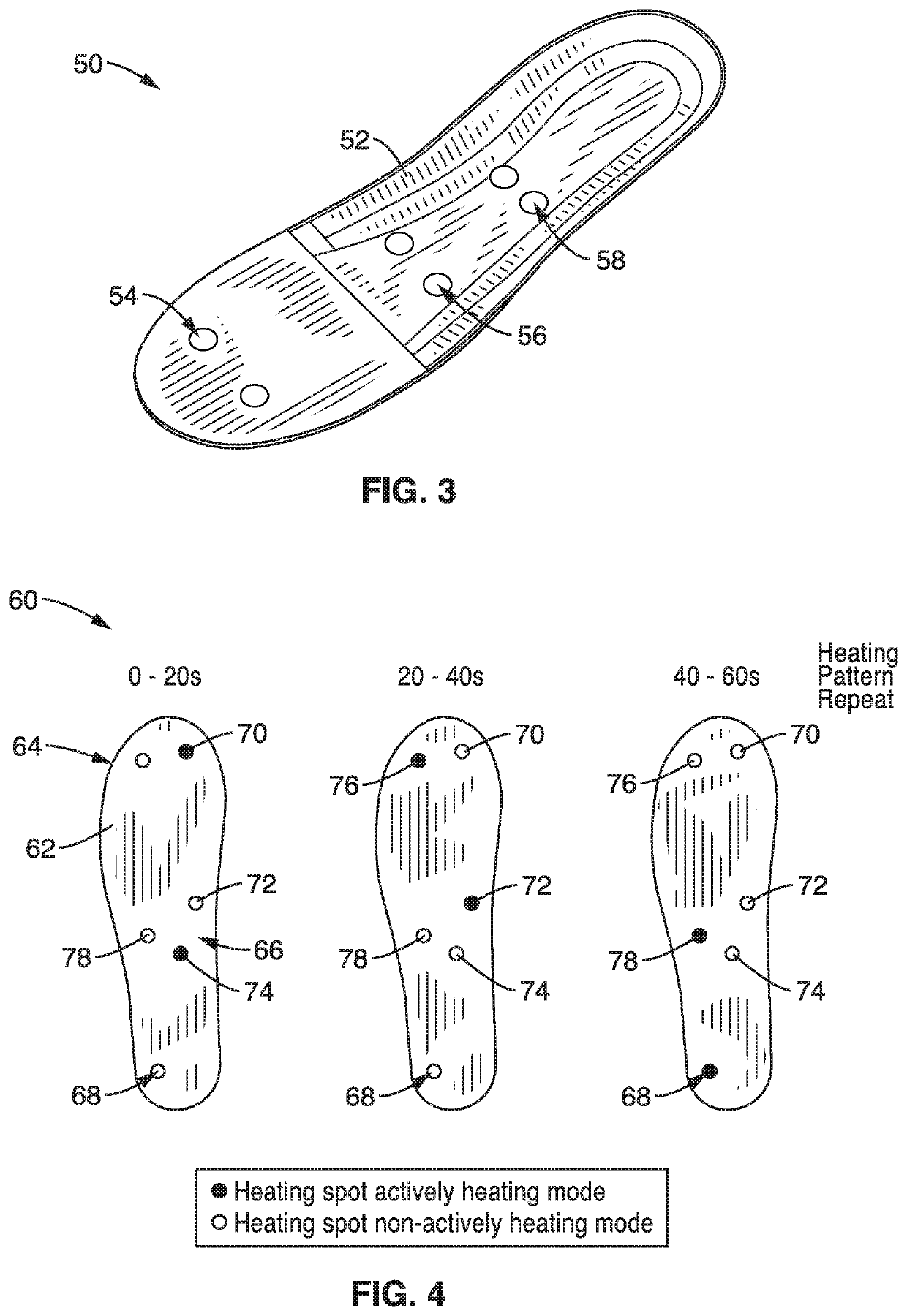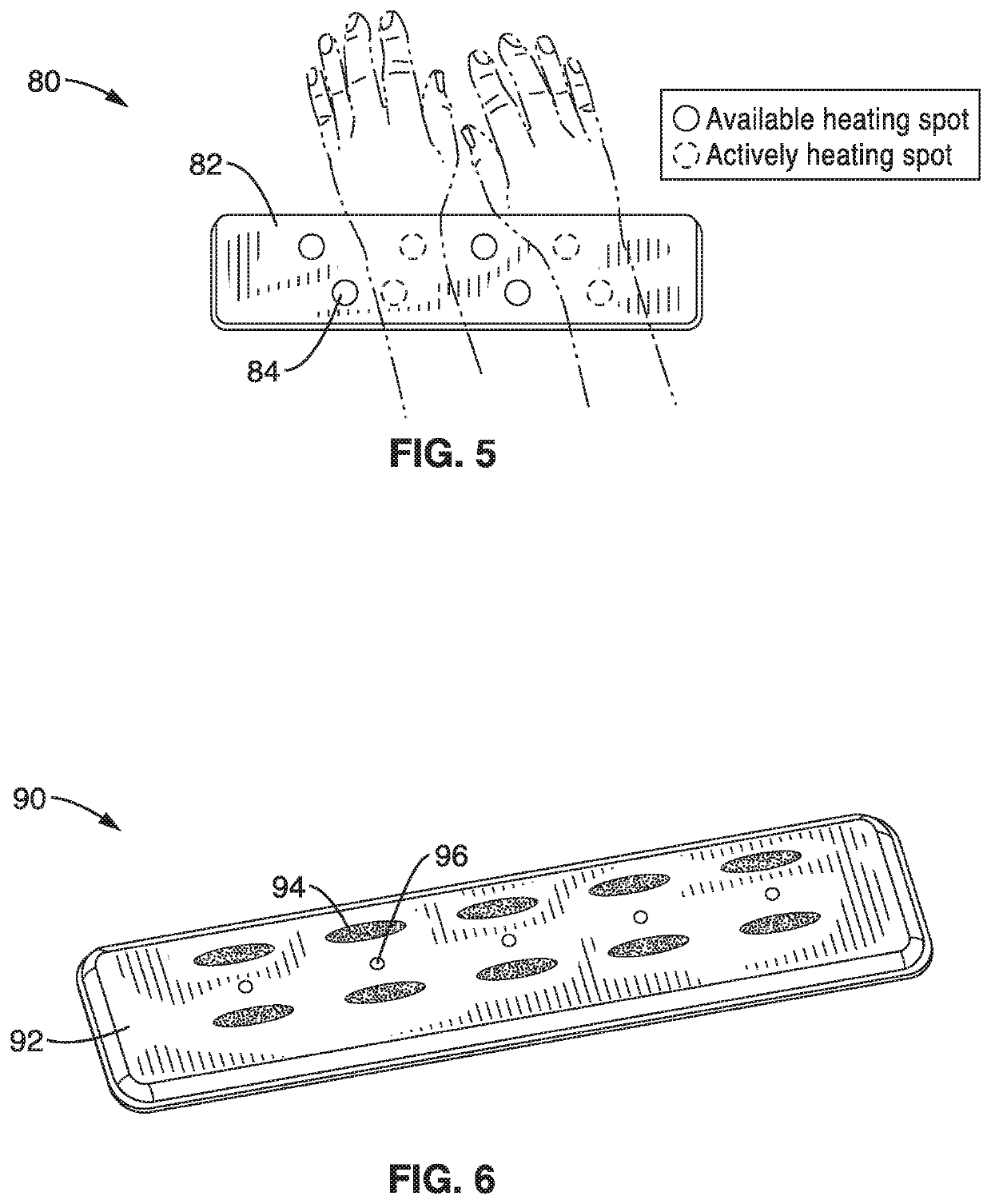Two-point and multiple-point spot heating and cooling
a heating device and multiple point technology, applied in the field of personal comfort systems, can solve problems such as complex conditions or experiences of thermal comfort, and achieve the effects of reducing material and labor costs, reducing energy consumption, and reducing the size of the battery of the heating devi
- Summary
- Abstract
- Description
- Claims
- Application Information
AI Technical Summary
Benefits of technology
Problems solved by technology
Method used
Image
Examples
example 1
[0091]To demonstrate the operational principles of the apparatus and methods for two-point and multi-point spot heating and cooling, insoles with spot heating elements were fabricated and evaluated. In this example, an insole heated by 6 heating points centered near the arch of the foot of the user. More heating spots were located near the center of the sole and at the base of the toes because those areas are more sensitive to heating or cooling. Body part sensitivities increase with observed discomfort from whole-body thermal imbalance. Only a small amount of energy is needed to heat or cool a body part to restore comfort. In this example, the foot was tested with an insole with 6 surface heating points which was powered in many pair combinations. Infrared images of the surface temperatures generated by the heating points at different settings of the test insoles were taken.
[0092]The heating was supplied by electrical resistance devices in some tests and cooling was supplied by the...
example 2
[0094]To further demonstrate the operational principles of the apparatus and methods, several wrist pads with thermal elements of different shapes located at different points along the length were evaluated. In one test prototype, the wrist pad was heated / cooled by 8 to 10 points. These thermal elements were grouped in 4 or 5 pairs. Thermal elements with several different shapes and different sizes (as small as 5 mm) were tested.
[0095]In one evaluation, the initial power delivered to a pair of thermal elements switching from inactive to active heating mode was greater (e.g., 0.6 Watts / point) to increase the heating speed. Following the initial activation, the power was then gradually lowered (e.g. 0.3 Watts / spot). When hands are moving, only one pair (two points) under each wrist is heated.
[0096]The technology was also tested for point cooling by contact surfaces. The cooling sensation between two cooling points was observed to be weaker than the warm sensation between two warming p...
PUM
 Login to View More
Login to View More Abstract
Description
Claims
Application Information
 Login to View More
Login to View More - R&D
- Intellectual Property
- Life Sciences
- Materials
- Tech Scout
- Unparalleled Data Quality
- Higher Quality Content
- 60% Fewer Hallucinations
Browse by: Latest US Patents, China's latest patents, Technical Efficacy Thesaurus, Application Domain, Technology Topic, Popular Technical Reports.
© 2025 PatSnap. All rights reserved.Legal|Privacy policy|Modern Slavery Act Transparency Statement|Sitemap|About US| Contact US: help@patsnap.com



